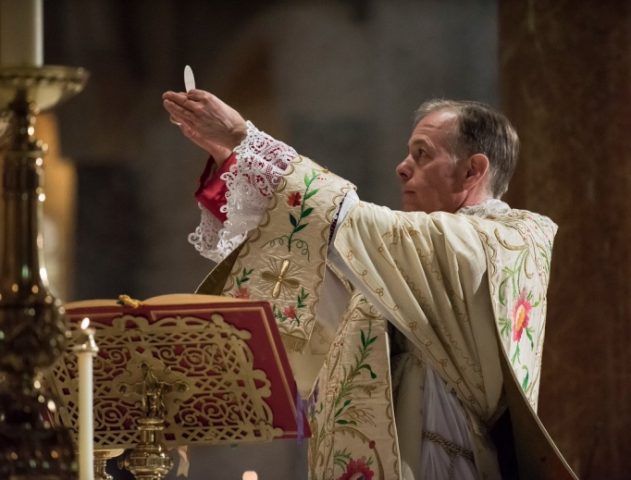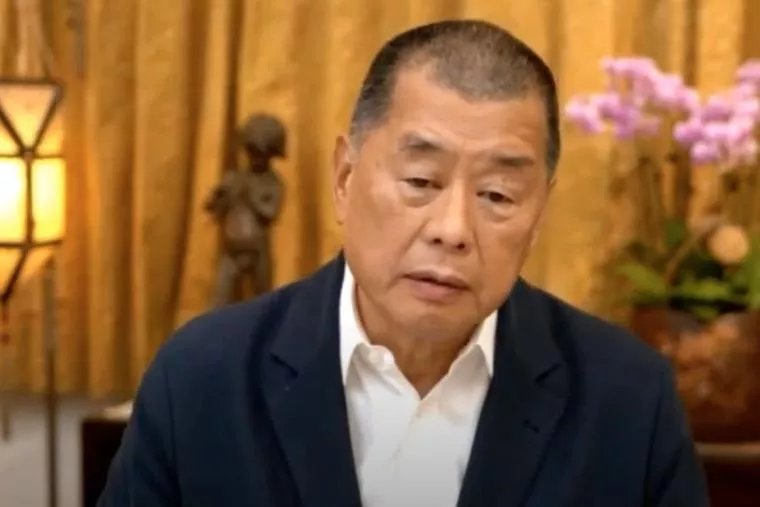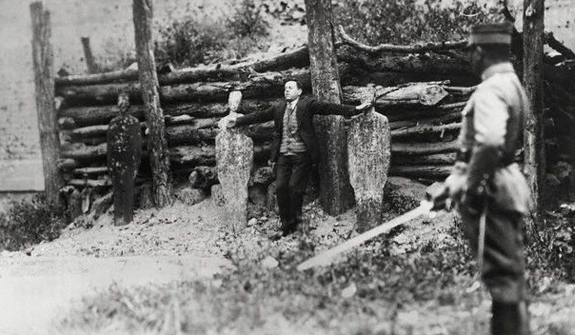‘Liturgy of Timelessness’ at the National Shrine in Washington

Rise – A 30 Day Day Challenge for Men!
May 1, 2018
Reports: Soros Funding Border Caravan Invasion
May 1, 2018
Photo: Archbishop Andrew Sample celebrates Mass April 28.
Archbishop Alexander Sample celebrated a pontifical high Mass at the Basilica of the Immaculate Conception Saturday.
By Charlotte Hays, EWTN, 4/30/18
WASHINGTON — The grandeur and beauty of Catholic worship were in full array as Archbishop Alexander Sample celebrated a pontifical high Mass at the National Shrine of the Basilica of the Immaculate Conception Saturday afternoon.
Sacred ministers — including deacons, subdeacons, two deacons and a subdeacon of the cross — diocesan priests and priests in the habits of the Dominican, Franciscan and Oratorian orders, and two Eastern rite clergy, along with vested laymen and laywomen of several Catholic orders of chivalry, walked up the basilica’s long aisle in solemn procession.
A capacity crowd had gathered in the basilica’s vast Upper Church, which seats 3,500, to hear and see Archbishop Sample, of Portland, Oregon, celebrate Mass in the extraordinary form according to Pope St. John XXIII’s 1962 Missale Romanum.
The Mass was organized by the Paulus Institute for the Propagation of the Sacred Liturgy. It was in gratitude for Pope Benedict XVI’s 2007 apostolic letter Summorum Pontificum, in which Benedict authorized Catholic priests under certain circumstances to celebrate the Mass according to the 1962 Missal.
Father Andrew Menke, the executive director of the U.S. Conference of Catholic Bishops’ Secretariat of Divine Worship, assisted in Saturday’s Mass. Commentary on EWTN was provided by Msgr. Andrew Wadsworth, the executive director of the International Commission on English in the Liturgy (ICEL) and Msgr. Charles Pope, the pastor of Holy Comforter-St. Cyprian Church on Washington’s Capitol Hill.
Memorable Sights
From start to finish, it was filled with memorable sights, such as that of the subdeacon, Canon Andrew Todd, the rector of the Oratory of St. Cyril and Methodius parish in Bridgeport, Connecticut, carrying in procession the maniple, which the archbishop would don as the last article of his vestments to be put on before celebrating the Mass.
During the procession, priests in cassocks and surplices either held in their hands their birettas or folded their hands in an attitude of reverence as they made their way toward the sanctuary, where Archbishop Sample was soon to say Mass ad orientem (facing liturgical east rather than facing the congregation) at the basilica’s magnificent high altar under the elaborate baldachin. During the Mass, priests tipped their birettas at the name of Jesus, in accordance with reverent and ancient tradition.
The Mass was the votive Mass of the Immaculate Heart of the Blessed Virgin Mary in Eastertide. The setting was Tomas Luis de Victoria’s Missa Salve. The propers were Gregorian chant, with motets by Claudio Monteverdi, Pierre de Manchicourt, Thomas Tallis, Vincenzo Ugolini and Luca Marenzio.
The schola of St. Mary Mother of God in Washington, the schola cantorum of The Lyceum School of St. John the Baptist Catholic Church in Allentown, New Jersey, the Choir of the Basilica of the National Shrine of the Immaculate Conception, and the Washington Cornett and Sackbutt Ensemble provided music.
Especially beautiful, two choirs sang antiphonally from opposing sides of the sanctuary. A deacon sang the Epistle standing just inside the altar rail and facing toward the high altar.
Archbishop Sample, who did not learn to celebrate this form of the Mass until after he had become a bishop, preached a well-received sermon that highlighted the significance of the occasion.
Usus Antiquior
Speaking of the pope emeritus’ role in making the Mass of the 1962 Missal available again, Archbishop Sample said, “I know I speak on behalf of all gathered here, those watching this live broadcast through EWTN and many others, when I say thank you for your wisdom, foresight and pastoral generosity in allowing the usus antiquior [ancient usage] of the Roman Rite to once again flourish in the universal Church.”
“As we gather here today in this magnificent basilica,” the archbishop noted, “one cannot help but notice the very large presence of young people who have come to participate in this Mass. I have met a good number of you personally. You are a great sign of encouragement and hope for the Church, tossed about these days on the troubled waters of secularism and relativism. As they say, ‘you get it.’ You understand your place in the world and in the Church to help rebuild a culture of life in society and a renewal of Catholic culture within the Church herself.”
Archbishop Sample, 57, noted that many are surprised that so many young people like the traditional Mass.
“I have heard many in the Church, including priests and bishops, express puzzlement and dismay over why so many young people are attracted to this venerable form of the Roman Rite,” he said. “They say things like, ‘I just don’t understand it. How could they be so attracted to a form of the liturgy that they did not grow up with or ever experience?’ If the comment has been directed to me, I have often responded, ‘That is exactly the question you should be asking. Why are they attracted to this liturgy?’ Or perhaps more pointedly, ‘What is it that this form of the Roman Rite provides for them that their own experience growing up with the ordinary form did not provide?’ For this will give us an insight into what future liturgical development might look like.”
Liturgical Reform
“Now I do not want to be misunderstood,” Archbishop Sample continued. “I am not at all calling into question the liturgical reform that was actually called for by the Second Vatican Council. Nor am I calling into question the validity, legitimacy or even goodness of the missal promulgated by Blessed Paul VI. But perhaps in the actual implementation of the Council’s directives, not everything that occurred has born good fruit. And certainly through liturgical abuses, other aberrations, or simply a poor ars celebrandi [art of celebration], the ordinary form of the Roman Rite has too often been disfigured and has been experienced as a rupture with the past.”
“So young people have discovered this form of the sacred liturgy as part of their own Catholic heritage,” he said. “Maybe their experience growing up with the ordinary form did not carry with it the beauty, reverence, prayerfulness, sense of mystery and transcendence, or wonder and awe that the traditional Latin Mass has provided for them. Perhaps this is the answer to the question posed above about why young people are drawn to the Holy Mass celebrated according to the 1962 Missal.”
Although it was impossible to miss the large number of young Catholics present at Saturday’s Mass, Archbishop Sample did not overlook the older generation of Catholics who love the 1962 Missal.
“You are important, as well,” Archbishop Sample told them. “This is the Mass of the ages that has nourished the faith and life of generations and generations of Catholics, including my parents’ generation. I often think about that. This is the Mass that my grandparents participated in; this is the Mass that nourished the faith and devotion of my mother; this is the Mass that drew my father to the Church and helped fuel his conversion. It is the Mass that has produced saints.”
Communion was distributed to the faithful kneeling at the altar rail and only on the tongue. After the Mass, Archbishop Sample greeted people, many of whom knelt for a blessing, standing outside the Upper Church for more than an hour and a half.
Personal Experiences
In an exclusive interview with the Register, Archbishop Sample spoke of his personal experiences with the 1962 Missal.
“I have a great appreciation for the Latin Mass of the 1962 Missal, just on a personal level,” he said. “I’ve come to very deeply appreciate it. I didn’t learn the Mass in the extraordinary form until I was already a bishop. I decided I was a bishop of the Church, and there are two forms of the Mass of the Roman Rite, and I should know them both. And many people in my diocese (Marquette, Michigan) were interested in this Mass, and I thought, ‘Well, I am their shepherd. I should learn it, too.’”
Archbishop Sample said he learned the traditional Latin Mass by ordering books and videos to help him celebrate it.
“I joke that my first low Mass, by myself in my little chapel, took an hour because I had to refer to the cheat cards, as it were, to get through it.”
“As I learned it,” he continued, “I began to have a deep appreciation for it — the beauty of it, the reverence of it, the prayerfulness of it. So there is a personal affection that I have. But also I know that there are many of the faithful throughout the U.S. who have a great love and appreciation for this Mass; and, quite honestly, they need encouragement. So, for me, I came all this way as a personal spiritual pilgrimage, if you will, for myself.
“I consider coming here to celebrate his Mass a pilgrimage and have treated it this way. It is spiritually uplifting to me, but I have also come all this way to provide some encouragement to the good folks who are attached to the traditional Latin Mass, and especially the youth. I want them to know that their interest in this Mass has been duly noticed.”
The archbishop mused on the future of the traditional Latin Mass in the Catholic Church.
Because of the generosity of Pope Benedict XVI and his document Summorum Pontificum, “this Mass has been, so to speak, unchained and allowed to be freely celebrated, and as people, especially young people, have discovered it, part of me thinks the horse is out of the barn. How are you going to restrict this Mass and say it should not be celebrated [when so many are attracted] to its beauty and goodness?”
Paul King, the founder and president of the Paulus Institute, said, “The significance of this Mass is its dissemination as Pope Benedict encouraged — for the growth and appreciation of the deposit of faith embodied in the traditional Mass, in unity and in continuity with the Church of all ages. It is not something from past times. It is instead a liturgy of timelessness; equally, if not more necessary in our times, a Mass of the saints, as Archbishop Sample spoke; and equally of royalty and peasantry.”
Register correspondent Charlotte Hays writes from Washington.
Copyright © 2018 EWTN News, Inc. All rights reserved.
http://www.ncregister.com/daily-news/liturgy-of-timelessness-at-the-national-shrine-in-washington








